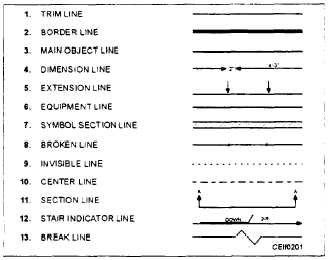
Figure 2-1. - Construction drawing lines.
Main object line: a heavy, unbroken line used to show visible outlines or edges that would be seen by people looking at the article, house, or building. The main object line is one of the most important lines because it outlines the main wall lines on plans and sections. It shows clearly the important parts of the construction and emphasizes the outline of the elevations.
Dimension line: a light line drawing outside the structure or detail to show the distance between two points. This line is drawn between extension lines with an arrowhead on each end. Between the arrowheads, the distance will be given either at a break in the line or just above the line. On some drawings the scale and the distance between the two points may not agree; in such cases, the distance will be given in a dimension line.
Extension line: a line that touches and is used with dimension lines. This line extends out from the edge or the point at which the dimension is to be determined.
Equipment line: a light, continuous, unbroken line used to show the location of equipment, such as transformers, panels. and galley equipment. This line is used to allow the electrician to install the necessary conduit in the proper location during rough-in work.
Symbol section line: lines that are generally solid, although, for certain conventions, dotted lines of the same weight may be used. Section lines, evenly spaced, are used to shade surfaces shown on a drawing and by these means indicate the material used. Material section lines are standardized to a certain degree, but you will find some variations. A set of working drawings using these symbols would have a symbol schedule key showing the various materials in that particular set. This schedule is usually placed near the title box on the plan of the first floor.
Broken line: a line with wavy breaks in it, at intervals, used to indicate those parts that have been left out or that the full length of some part has not been drawn. The broken line is used in detail drawings where only a section of the object is to be shown.
Invisible line: a line that is made up of a series of short dashes. It is used to indicate a hidden or an invisible edge or edges that are hidden under some other part of the structure.
Center line: a line that is made up of alternating long and short dashes and is used to indicate the center of an object.
Section line: a solid line that has arrowheads at each end that point in the direction in which the section is to be taken. This line tells just where the section line has been cut through the wall or building. The sections are indicated, in most cases, by the letters A-A, B-B, and so forth, although numbers are sometimes used. Do not overlook these section lines on a plan. To obtain a clear picture of the construction at the particular point indicated, always refer to the section detail called for by the letter or number. Stair indicator line: a solid line with an arrowhead indicating the direction of the run. For example, Up 12-R means that there are 12 risers from floor to floor and that the stairs go up. A riser is the vertical part of the step; the flat part on which one steps is the tread. In most cases, the floor plan indicates only the run of stairs half the distance between floors. For example, the ground floor indicates a broken line that tells you the steps continue up. The next floor plan shows the stair indicator line half the distance to the first floor, down.
Break line: a thin solid ruled line with freehand zigzags used to reduce the size of a drawing required to delineate an object and reduce detail.
ABBREVIATIONS AND SYMBOLS
Blueprints show a small-scale drawing of a full- size building. Since the blueprints are small in relation to the actual building, some kind of shorthand is needed to give the necessary building information. Abbreviations and symbols are used to show a large amount of information in a small space.
While there is some standardization of symbols and abbreviations, a lot of variation still exists. A key or legend is put on the blueprint to explain their uses.
Continue Reading